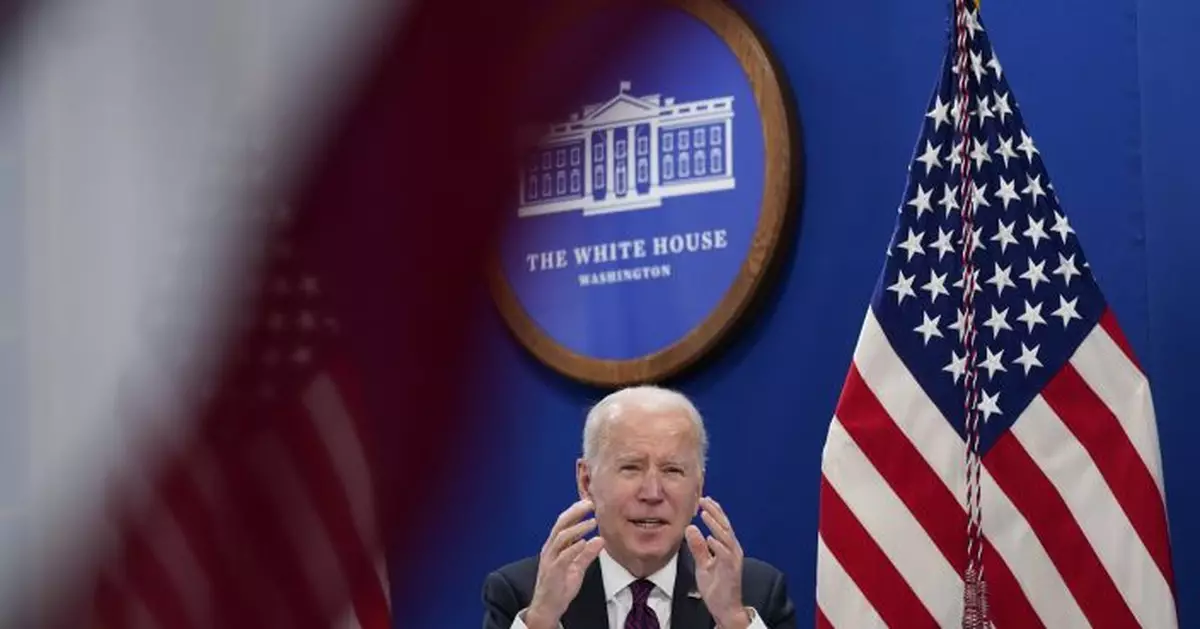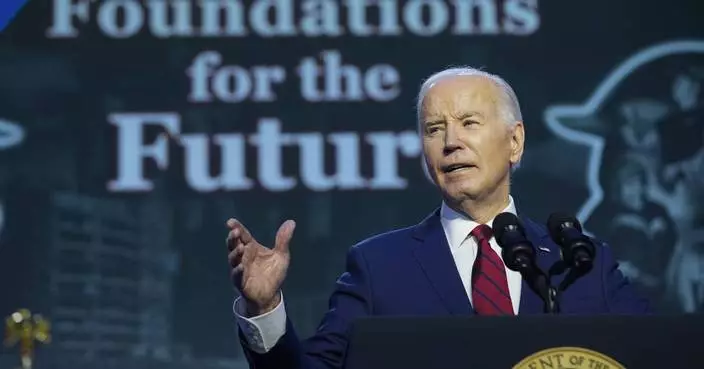President Joe Biden launched into his second year in office Thursday with a new focus on making fatigued Americans believe they’re better off under his leadership as he embraces a pared-back agenda before the midterm elections.
The persistence of the coronavirus, rising inflation and congressional gridlock have exacted a bitter toll on Biden’s approval rating and threaten a midterm routing for his party, but the president sees no need for a major shift in direction.
Instead, White House aides previewed subtler changes to how Biden devotes his time, with a greater emphasis on speaking directly to Americans and less time in the weeds with lawmakers crafting legislation.

President Joe Biden listens during a meeting with the President's Council of Advisors on Science and Technology at the Eisenhower Executive Office Building on the White House Campus, Thursday, Jan. 20, 2022. (AP PhotoAndrew Harnik)
“He wants to spend more time out in the country and less time behind closed doors negotiating,” White House press secretary Jen Psaki told reporters Thursday. She said Biden would rely on his aides more to engage in legislative negotiations, aiming to free up more of his own time to travel and sell his policies.
The understated White House response to a parade of bad headlines reflects the administration’s internal confidence that its predicament will lessen in coming months as the omicron variant of COVID-19 recedes and his policies have time to take effect. Administration officials believe they have until the summer to prop up Biden’s approval rating in order to help save as many Democratic congressional seats as possible.
“The public doesn’t want me to be the ‘president senator,’” Biden said in a rare news conference on Wednesday. “They want me to be the president and let senators be senators.” Biden acknowledged “there's a lot of frustration and fatigue in this country” and placed responsibility for that squarely on the pandemic, “the new enemy.”

President Joe Biden speaks during a meeting with the President's Council of Advisors on Science and Technology at the Eisenhower Executive Office Building on the White House Campus, Thursday, Jan. 20, 2022. (AP PhotoAndrew Harnik)
A video released Thursday by Biden’s inaugural committee to mark the end of his first year in office offered a preview of what’s to come. The ad highlights progress on the economy and against the virus, but acknowledges the work isn’t done.
“It isn’t all the way back, but it’s getting stronger,” narrator Tom Hanks says of the economy. “We may be entering year three of a pandemic none of us wanted or expected, but we’re moving.”
“I can feel the change,” Sandra Lindsay, the New York nurse who was the first person in the U.S. to get an approved COVID-19 vaccine, says in the video.
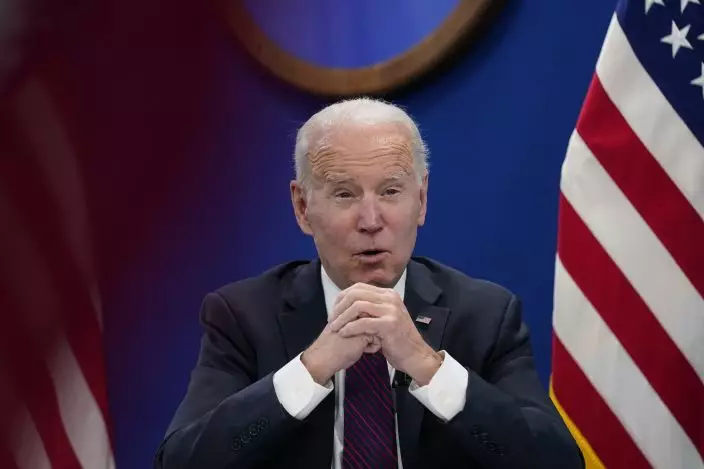
President Joe Biden speaks during a meeting with the President's Council of Advisors on Science and Technology at the Eisenhower Executive Office Building on the White House Campus, Thursday, Jan. 20, 2022. (AP PhotoAndrew Harnik)
Getting Americans to recognize that change is a priority for the White House.
The pandemic and its aftermath altered how voters judge Biden’s performance. His $1.9 trillion coronavirus relief package launched the economy toward a fast recovery, but it also drove inflation to a 7% rate that frightened voters. The result is an unusual schism in which voters are financially comfortable yet deeply skeptical about the health of the national economy.
While 64% of Americans described their financial conditions as good, only 35% felt positive about the overall economy, according to a December poll from the AP-NORC Center for Public Affairs Research.
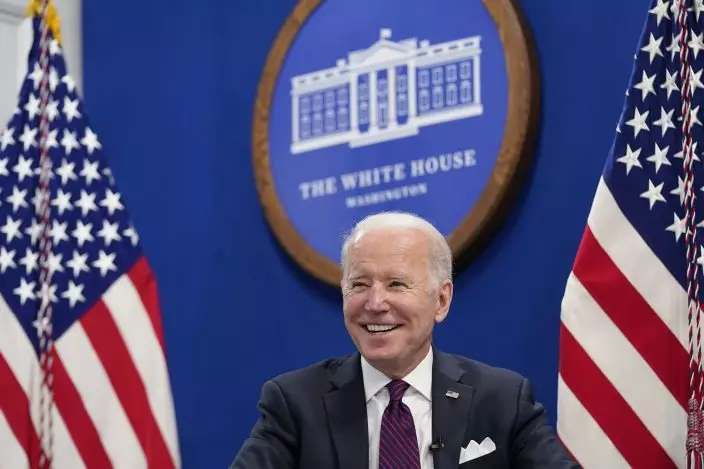
President Joe Biden speaks during a meeting with the President's Council of Advisors on Science and Technology at the Eisenhower Executive Office Building on the White House Campus, Thursday, Jan. 20, 2022. (AP PhotoAndrew Harnik)
Biden spent part of Thursday meeting with his Infrastructure Implementation Task Force, charged with swiftly turning last year’s bipartisan infrastructure law into shovels in the ground and new jobs created. Billions of dollars have already been allocated, and Biden wants to ensure he gets the credit.
While the White House didn’t immediately announce travel plans for Biden, Vice President Kamala Harris is set to travel to California and Wisconsin this week to spotlight how money from the law is being put to use to combat wildfires and replace lead water pipes.
Biden insists he's not giving up on his nearly $2 trillion domestic priorities bill, but said Wednesday he hoped “chunks” would pass before the midterms. Slimming down the bill would probably be necessary to win over Democratic holdout Sen. Joe Manchin of West Virginia. But House Speaker Nancy Pelosi said Thursday she didn’t want the legislation to lose its ambitions to address climate change and lower costs for working class families.
“What the president calls ‘chunks’ I’d hope would be a major bill going forward,” she said.
Eric Schultz, a former spokesman for President Barack Obama, said the administration has so far gotten too bogged down in the minutiae of legislative negotiations. He suggested that it course-correct by sending Biden out of Washington to talk more about the specifics of how his agenda has helped average Americans.
“Joe Biden as is at his best when he’s talking directly to the American people about what they care about,” he said.
He also argued that Democrats need to be more forceful in drawing a contrast with Republicans.
“People need to understand that he has their back," Schultz said. “And the Republicans don’t. And so when he makes that case, it reinforces who in Washington is working for them,.”
Ben LaBolt, another former Obama spokesman, suggested that the legislative difficulties of Biden’s first year had a silver lining: “tempered expectations” for what’s possible, as well as a “sense of urgency” on the part of Democrats to get something done in Congress before the midterms, when they could lose control of either or both chambers.
“The accomplishments of the past year have not fully baked in with the average American yet," he said. "And it takes time for them to learn about legislation after it passes,” he said.
Associated Press writer Josh Boak contributed.
TOKYO (AP) — Spicy, steaming, slurpy ramen might be everyone’s favorite Japanese food.
In Tokyo, long lines circle around blocks, and waiting an hour for your ramen is normal. What awaits might be just a dive, but a hot bowl of ramen rarely fails to hit the spot.
Often cooked right before your eyes behind dingy counters, the noodle dish starts here at around 1,000 yen ($6.50), and comes in various flavors and local versions. There's salty, soy-based “shoyu” or “miso” paste. Perhaps it's red-hot spicy with a dash of chili. Sometimes there's no soup at all but a sauce to dip the noodles in.
The curly noodles are lighter than the darker buckwheat “soba,” or “udon,” which are also usually flatter or thicker.
Ramen has also surged in popularity in the U.S., South Korea and other countries. Retail sales in the United States have risen 72% since 2000, according to NielsenIQ, a sales tracker. In the 52 weeks ending April 13, Americans bought more than $1.6 billion worth of ramen.
In restaurants, versions beyond the traditional soup are appearing, said Technomic, a research and consulting company for the restaurant industry. Del Taco, a Mexican chain, recently introduced Shredded Beef Birria Ramen, for example.
Packaged ramen that's easily cooked in hot water at home is called instant noodles; it's precooked and then dried. The story of how Momofuku Ando invented instant ramen in a backyard shed in 1958, when food was still scarce, is the stuff of legend in Japan. He went on to found the food giant Nissin Foods.
Although convenient, instant noodles aren't the same as the ramen served at restaurants.
Some Japanese frequent ramen shops twice or three times a week. They emerge, dripping with sweat, smacking their lips.
“I’m probably a talking bowl of ramen,” says Frank Striegl as he leads a dozen American tourists through the back alleys of Tokyo’s funky Shibuya district on what he calls “the ultimate ramen experience.”
The crowd is led behind a shabby doorway, sometimes down narrow stairs, to a dim-lit table where ramen gets served in tiny bowls, practically the size of a latte cup, or about a quarter of a regular ramen bowl. That's so guests have enough room in their tummies to try out six different kinds of ramen, two at each spot during the tour.
One restaurant, Shinbusakiya, offers “Hokkaido classics” from the northernmost main island, while another, Nagi, offers “Fukuoka fusion,” from the southern main island of Kyushu. It includes a green ramen, similar to pasta al pesto. Syuuichi, which means “once a week,” features curry-flavored ramen.
“It’s not just, of course, about eating delicious ramen, but also learning about it,” said Striegl, a Filipino American who grew up in Tokyo. He calls ramen “people’s food.”
“A lot of countries around the world have their version of ramen in a way," he said. "So I think because of that, it’s a dish that’s easy to understand. It’s a dish that’s easy to get behind.”
While the tour participants were relishing their noodles, Striegl outlined a brief history of ramen: Its roots date back to the samurai era, when a shogun took a fancy to Chinese noodles, setting off the localizing journey for ramen that continues today.
Katie Sell, a graduate student on Striegl’s tour, called ramen "a kind of comfort food, especially in the winter. Get a group of friends, go have some ramen and just enjoy it.”
Kavi Patel, an engineer from New Jersey, said he was glad he included the humble ramen on his tour of Japan, along with more established attractions like the ancient capital of Kyoto and the deer park in Nara. “I’m having good fun,” he said.
While ramen has never been more popular in Japan, ramen places have struggled because of the pandemic, the weakening Japanese yen, and the higher cost of wheat imports and energy, according to a study by Tokyo Shoko Research.
One beneficiary of the pandemic is a home delivery service for frozen, professionally cooked ramen. Called takumen.com, it boasts some 500,000 subscribers in Japan.
Another Tokyo operation, Gourmet Innovation, has signed on 250 of the country's top ramen joints to sell packaged versions of their soup, noodles and toppings, to be heated up in boiling water and served at home.
Co-founder and executive Kenichi Nomaguchi, who hopes to expand his business overseas, says ramen and animation are Japan’s most successful exports.
Why ramen? Unlike pasta or curry, ramen is difficult to replicate at home, he said, Making it from scratch involves hours of cooking stock, with pork, beef or chicken, various fish or bonito flakes, and “kombu” kelp. Some stock uses oysters.
Besides the different soup stocks and flavors, onions, grated garlic, ginger or sesame oil can be added for extra punch. Toppings can include bean sprouts, barbecued pork, boiled or raw eggs, seaweed, fermented bamboo shoots called “menma,” chopped green onions, cooked cabbage, snow peas or corn.
Some insist a bowl of ramen is not complete without a slice of narutomaki, a whitefish cake with a pink spiral pattern.
Unusual varieties include coffee ramen and ramen topped with ice cream or pineapple.
Jiro-style ramen, named for a legendary restaurant in Tokyo, features mounds of vegetable toppings, huge steak-like barbecued pork and pungent, grated garlic seeped in a fatty pork-based stock.
“Impact is important. So the pork has to be big so it’s truly memorable,” said Kota Kobayashi, who serves Jiro-style ramen at his chain, “Ore No Ikiru Michi,” which translates to, “The way I live my life.”
Kobayashi is a former professional baseball player at the Yokohama Bay Stars, and played with the minor league Cleveland Guardians before switching to his ramen business.
“When I quit baseball, I chose ramen as my way of life,” he said with a smile.
He can wax philosophical about ramen. One cultural difference he has observed is that Americans tend to leave the noodles and drink all the soup, while the Japanese mostly do the opposite.
And taste is only part of what makes good ramen. One must also offer entertainment, Kobayashi said.
At his restaurants, the chopsticks are tucked in a box on a shelf, so first-time visitors ask where they are. Repeat customers go straight to that box. Kobayashi calls out, “Welcome back,” making the customers feel a connection, even if he doesn't remember a thing about them.
Dee-Ann Durbin contributed to this story from Detroit.
Yuri Kageyama is on X: https://twitter.com/yurikageyama
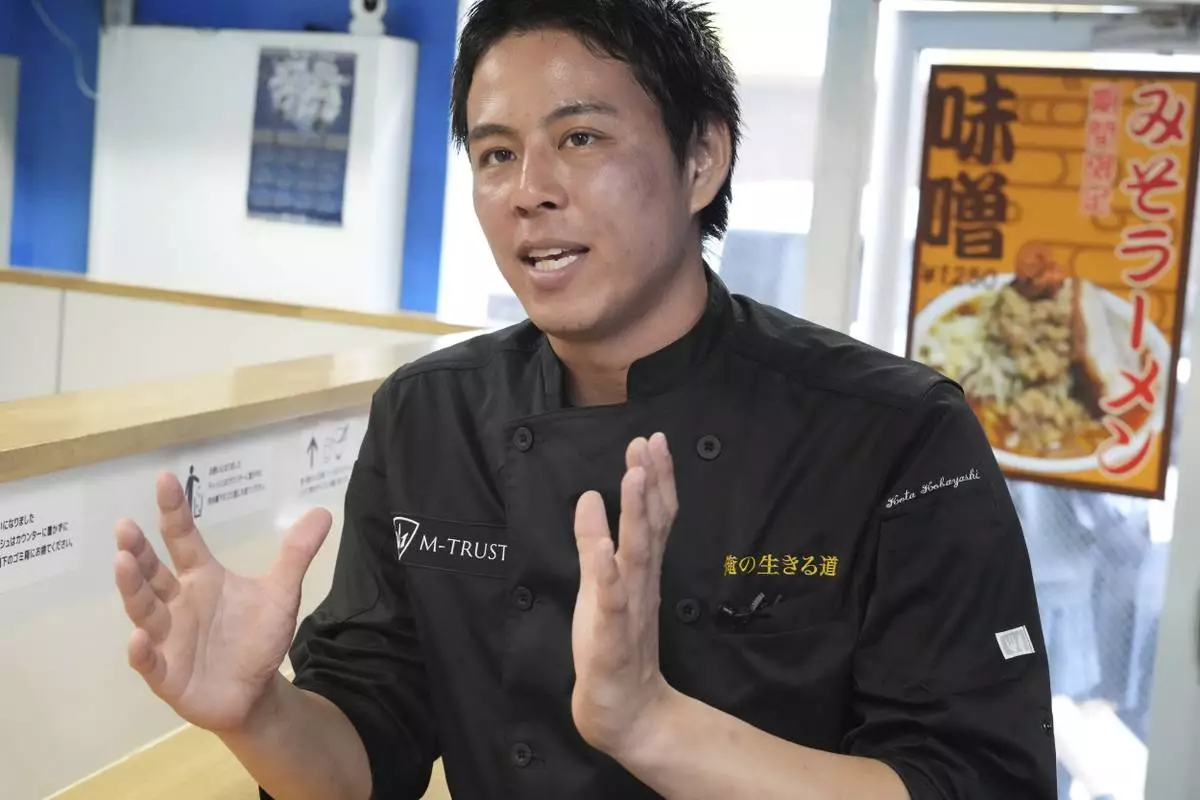
Kota Kobayashi, owner of a chain ramen shop called "Ore No Ikiru Michi," speaks during an interview with The Associated Press on April 17, 2024, in Tokyo. (AP Photo/Eugene Hoshiko)
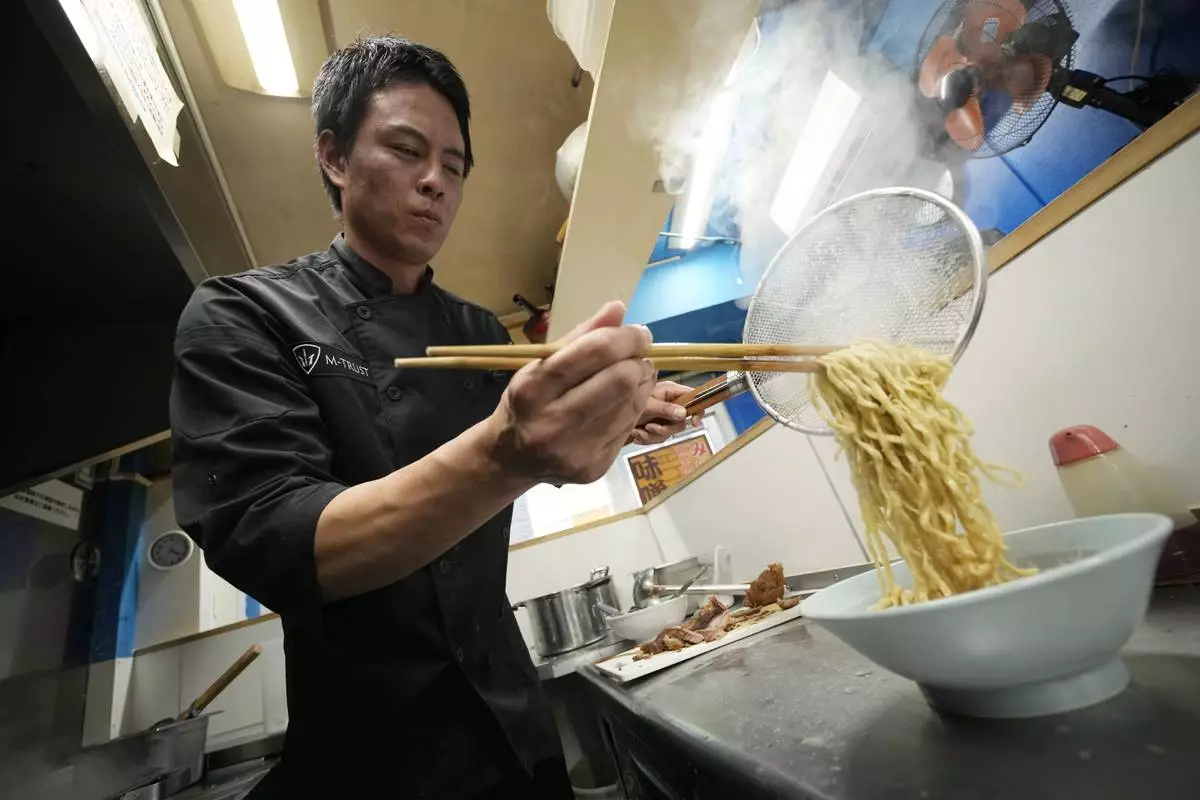
Kota Kobayashi prepares a bowl of noodle at his chain called "Ore No Ikiru Michi" in Tokyo on April 17, 2024. (AP Photo/Eugene Hoshiko)
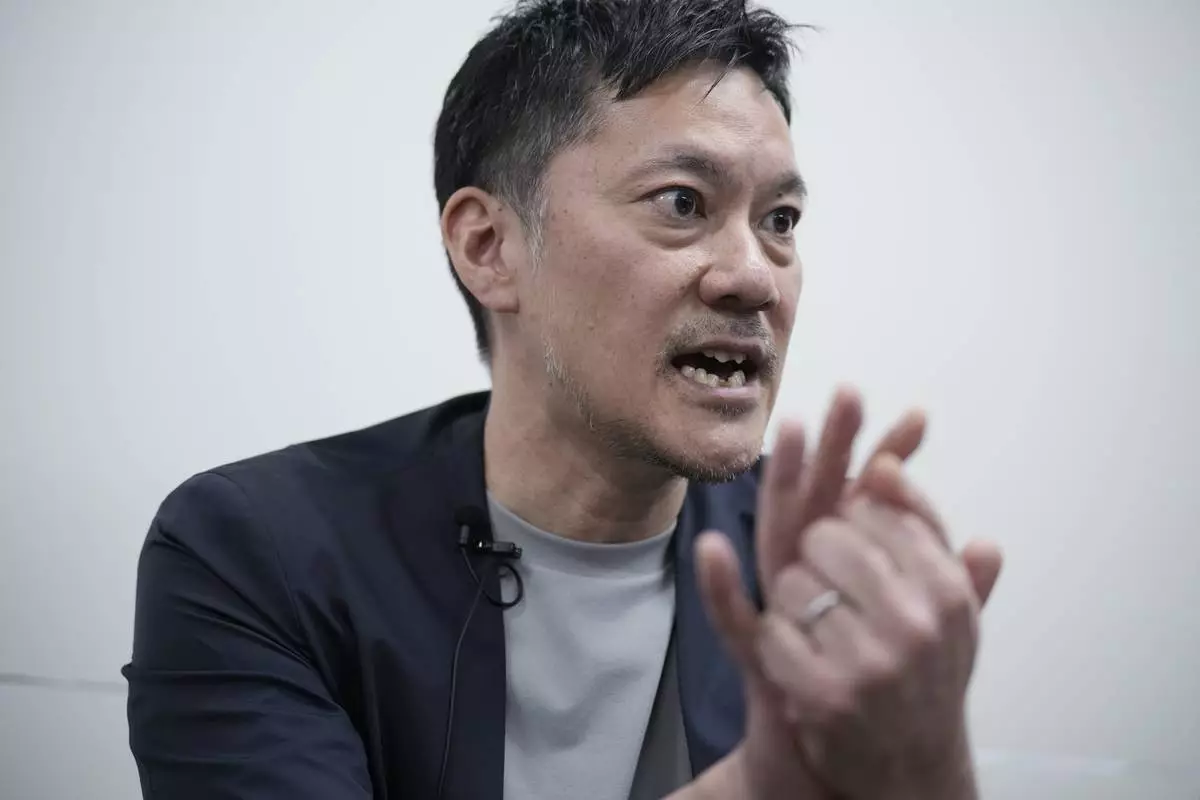
Co-founder and executive Kenichi Nomaguchi of Gourmet Innovation, speaks during an interview with The Associated Press in Tokyo, on April 10, 2024. Gourmet Innovation has signed on 250 of the country's top ramen joints to sell packaged versions of their soup, noodles and toppings, to be heated up in boiling water and served at home. (AP Photo/Eugene Hoshiko)
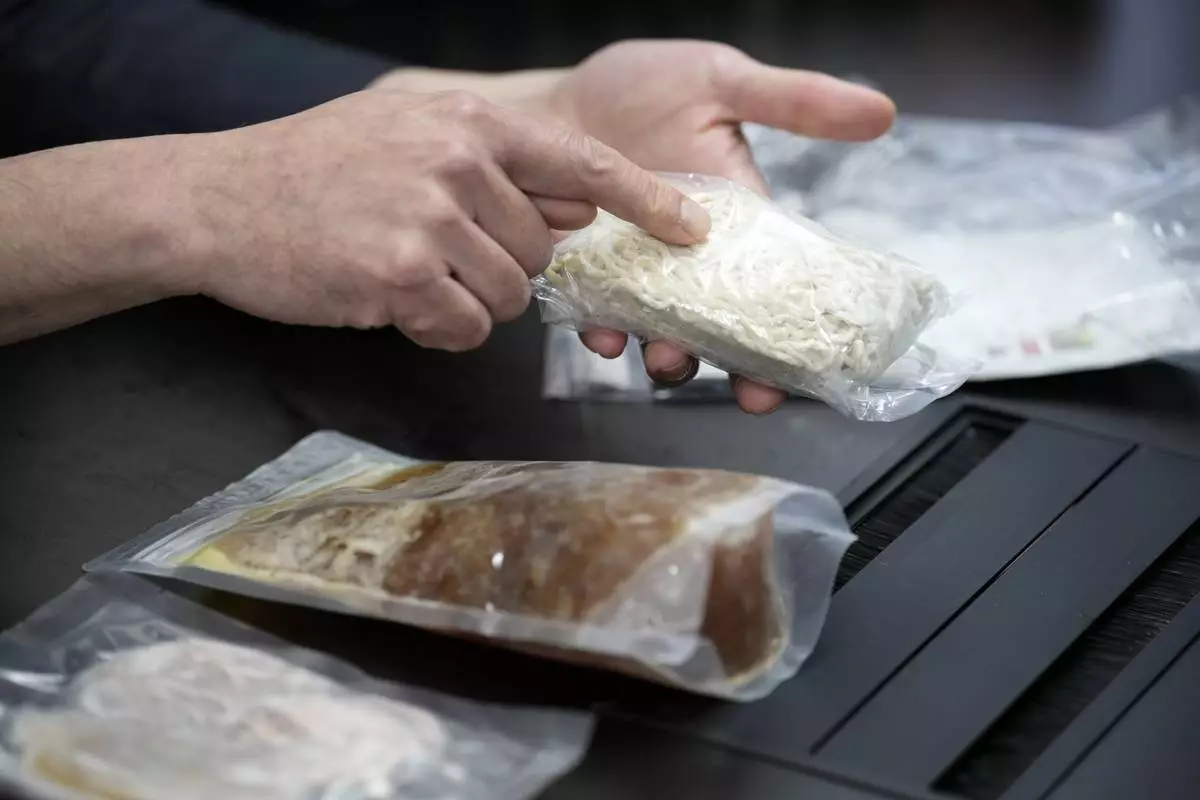
Co-founder and executive Kenichi Nomaguchi of Tokyo-based Gourmet Innovation, explains on the merchandise during an interview with The Associated Press, in Tokyo on April 10, 2024. Gourmet Innovation has signed on 250 of the country's top ramen joints to sell packaged versions of their soup, noodles and toppings, to be heated up in boiling water and served at home. (AP Photo/Eugene Hoshiko)
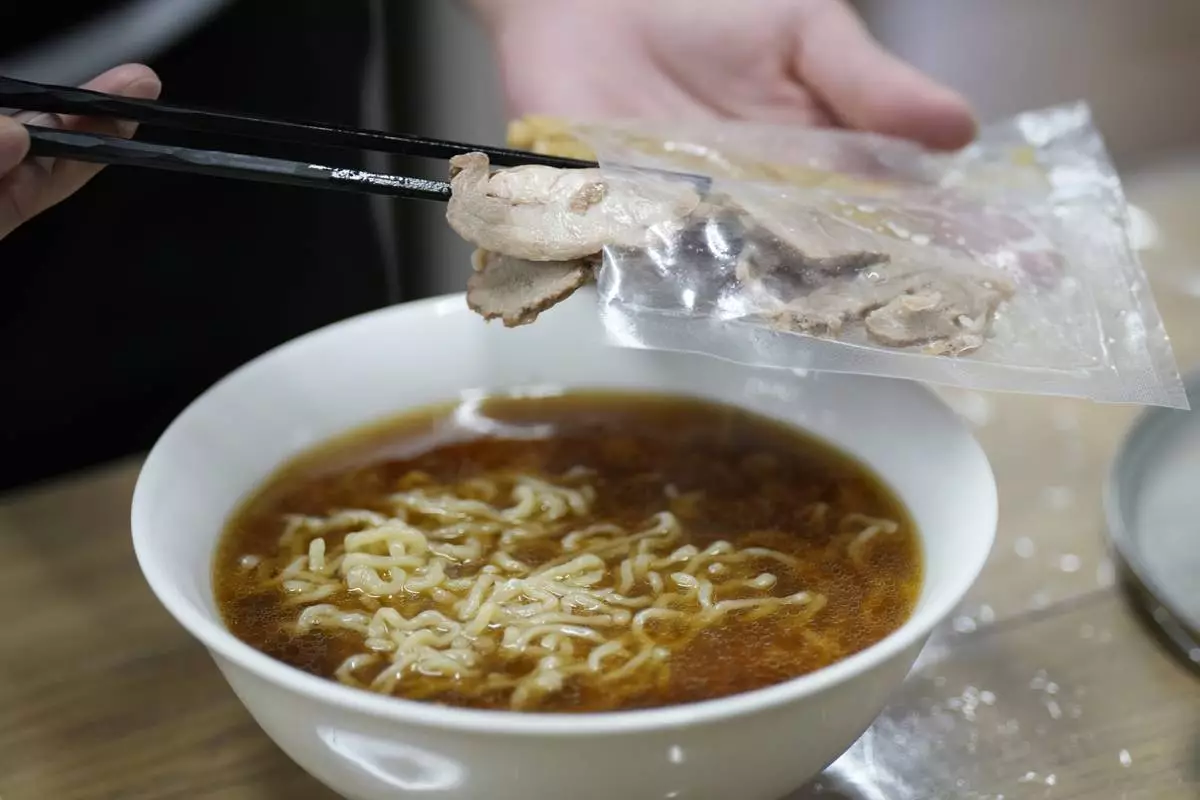
A staff member cooks one of their ramen merchandise sold online at Gourmet Innovation in Tokyo, on April 10, 2024. Gourmet Innovation has signed on 250 of the country's top ramen joints to sell packaged versions of their soup, noodles and toppings, to be heated up in boiling water and served at home. (AP Photo/Eugene Hoshiko)
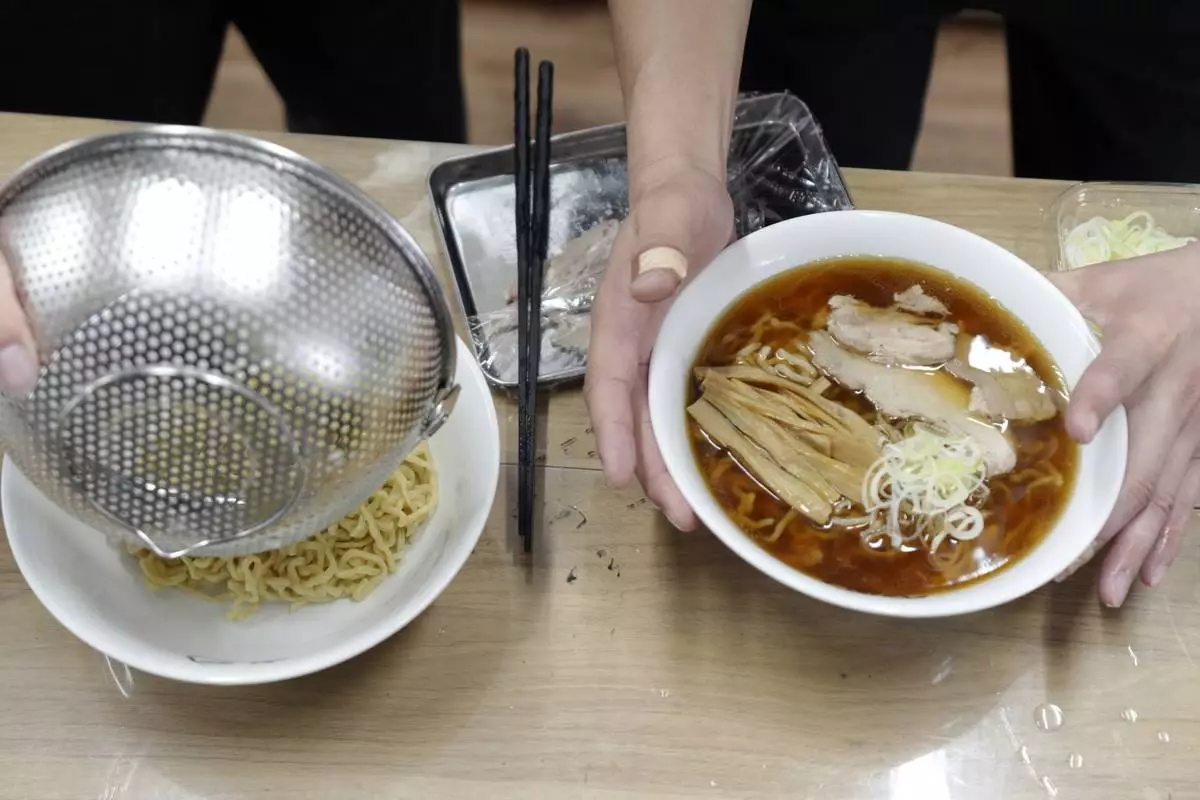
A staff member cooks one of their ramen merchandise sold online at Gourmet Innovation, in Tokyo Wednesday, April 10, 2024. Gourmet Innovation has signed on 250 of the country's top ramen joints to sell packaged versions of their soup, noodles and toppings, to be heated up in boiling water and served at home. (AP Photo/Eugene Hoshiko)
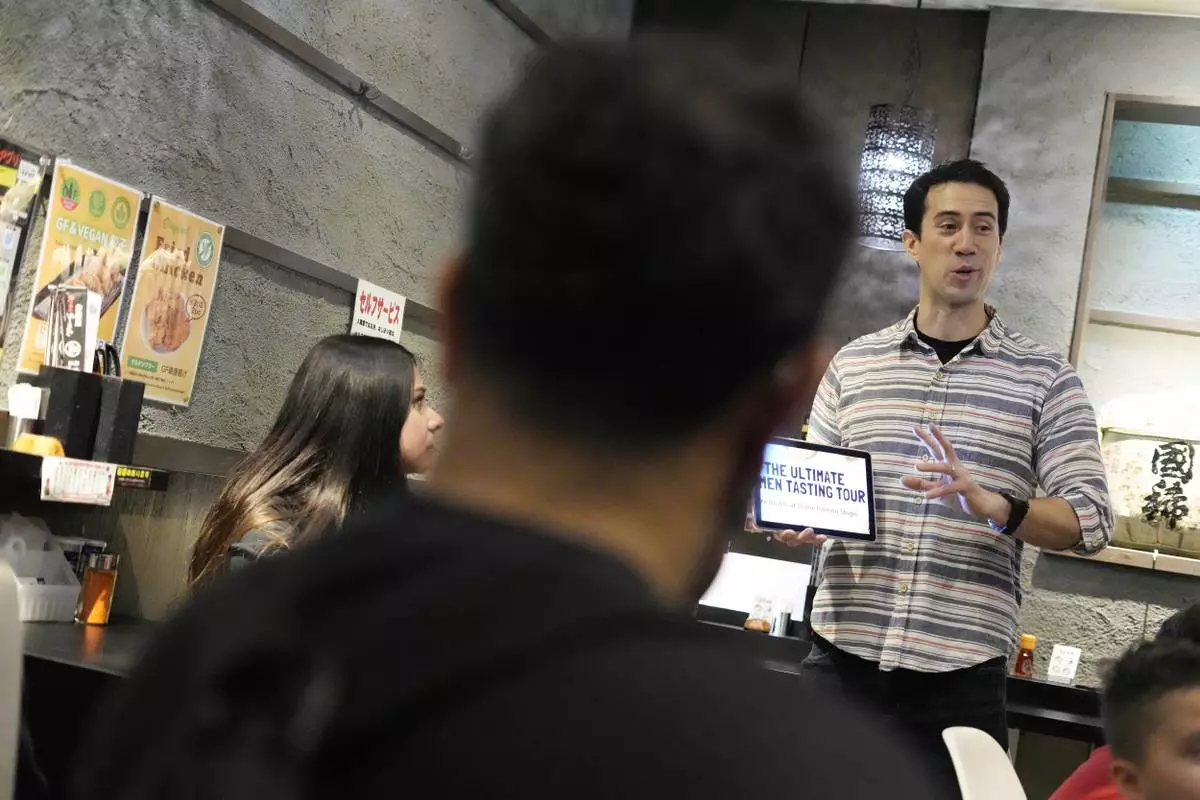
Frank Striegl, right, a guide of Tokyo Ramen Tours, explains foreign participants of a ramen tasting tour at Shinbusakiya, a ramen shop which offers "Hokkaido classics," at Shibuya district on April 2, 2024, in Tokyo. (AP Photo/Eugene Hoshiko)
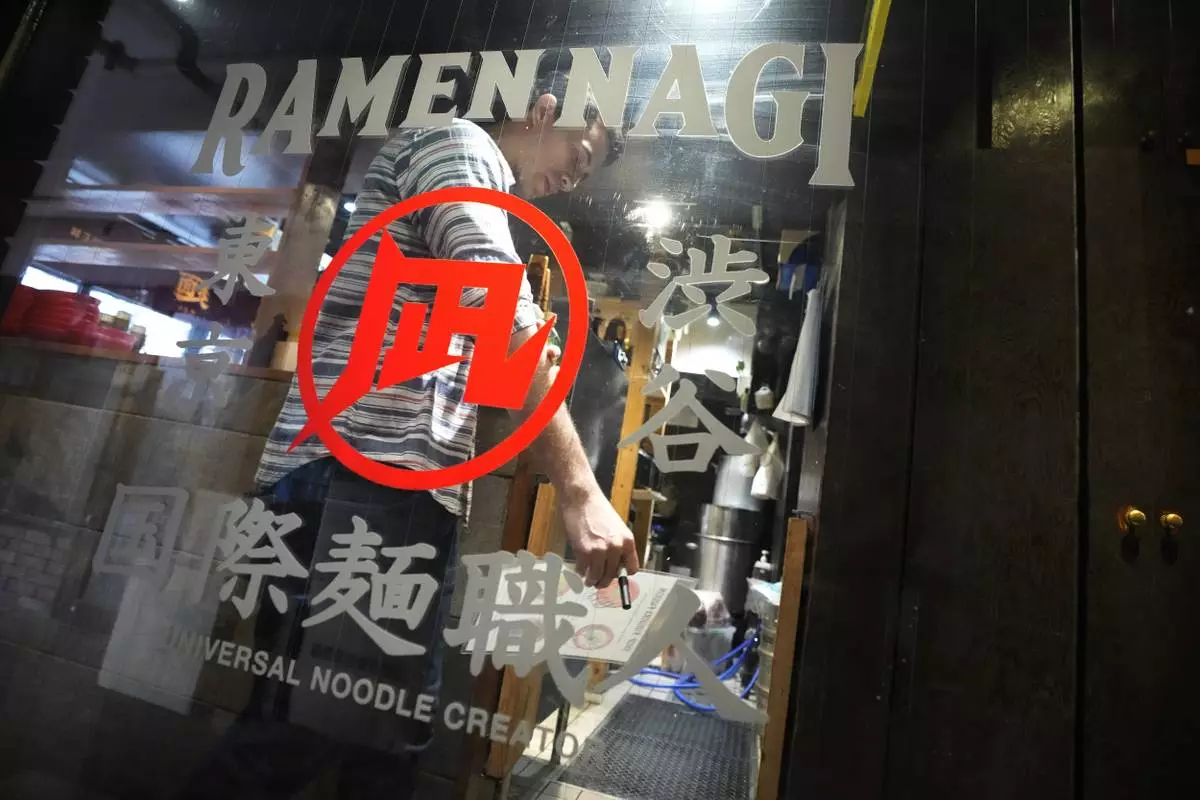
Frank Striegl, a guide of Tokyo Ramen Tours, walks inside Nagi, which offers "Fukuoka fusion," type ramen at Shibuya district on April 2, 2024, in Tokyo. (AP Photo/Eugene Hoshiko)
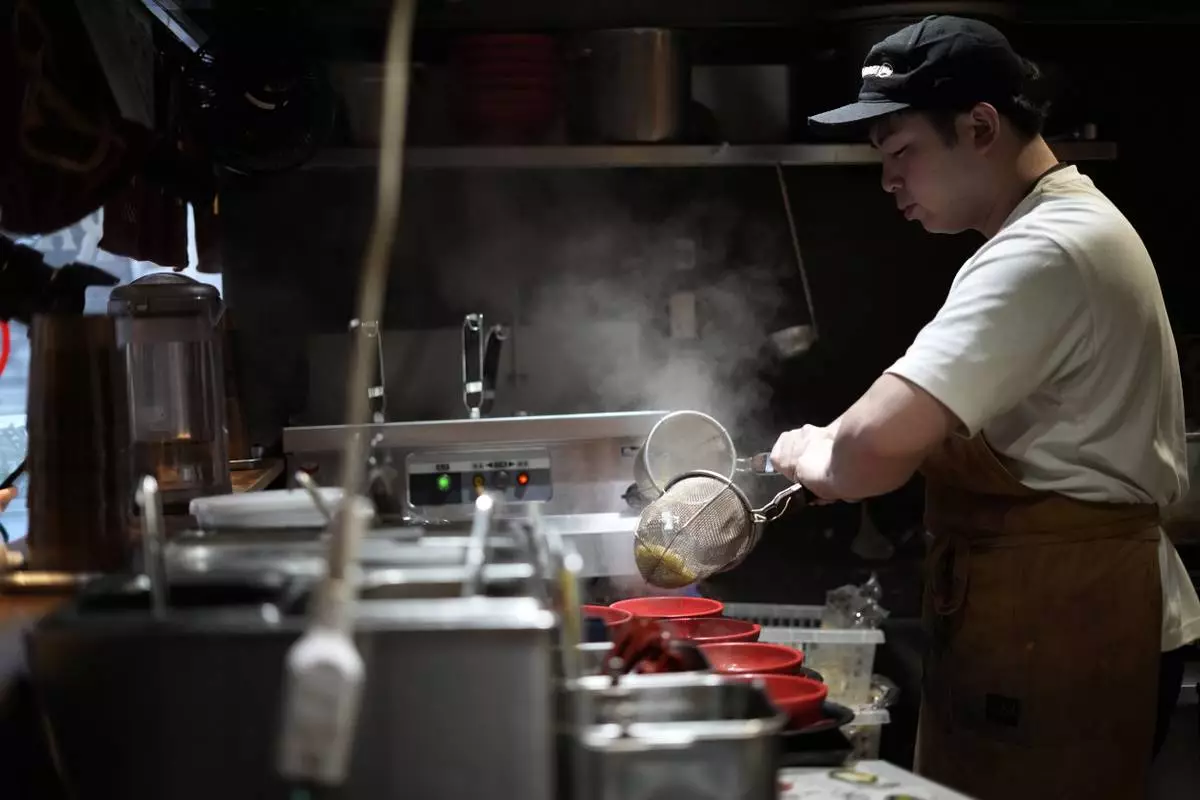
A chef cooks noodle for participants of Tokyo Ramen Tours at Nagi, which offers "Fukuoka fusion," type ramen at Shibuya district on April 2, 2024, in Tokyo. (AP Photo/Eugene Hoshiko)
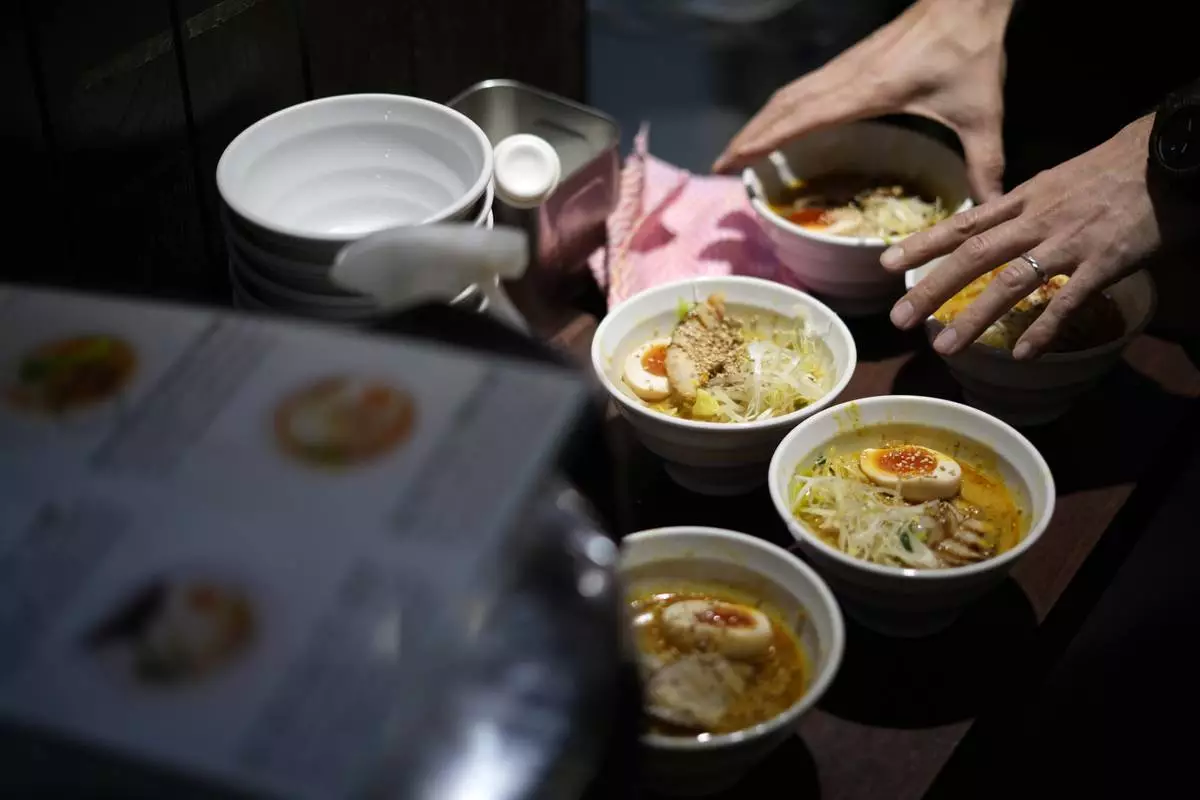
A staff member prepares to serve noodles for participants of Tokyo Ramen Tours at Syuuichi, which means "once a week," featuring curry-flavored ramen, at Shibuya district on April 2, 2024, in Tokyo. (AP Photo/Eugene Hoshiko)
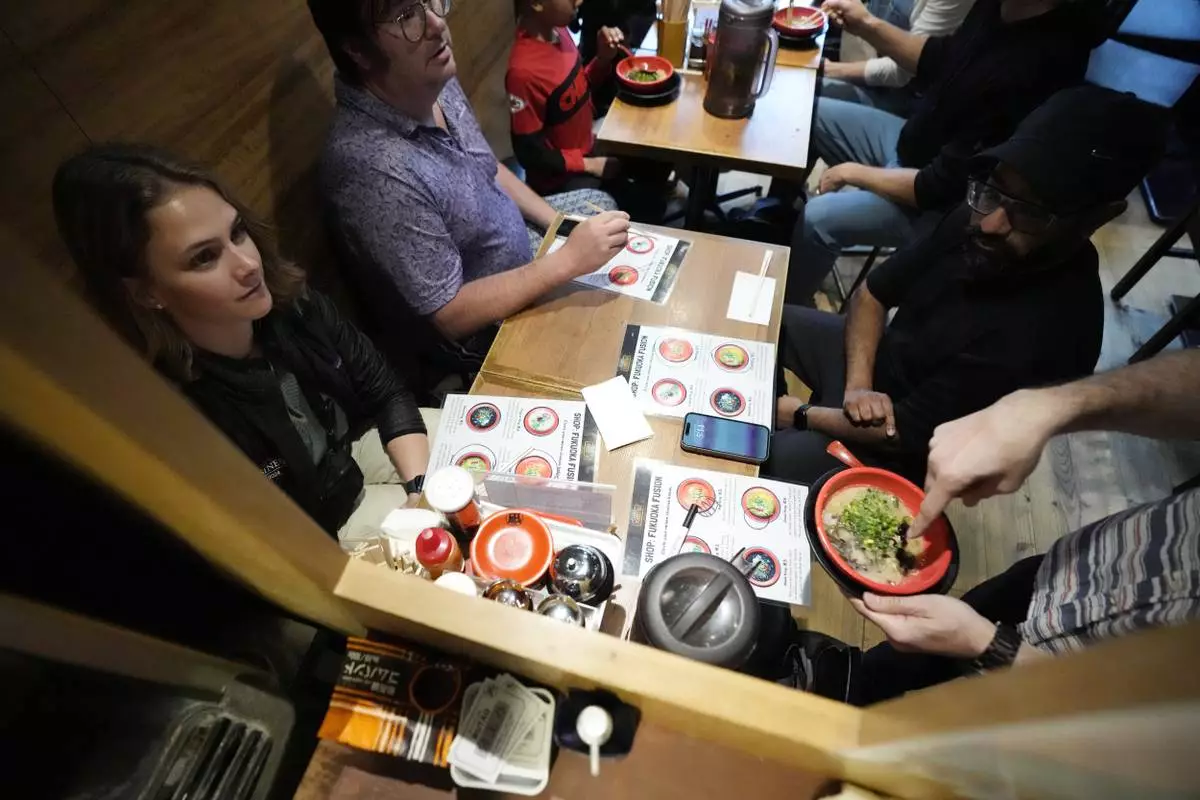
Frank Striegl, bottom right, a guide of Tokyo Ramen Tours, explains participants of a ramen tasting tour at Nagi, which offers "Fukuoka fusion," type ramen at Shibuya district on April 2, 2024, in Tokyo. (AP Photo/Eugene Hoshiko)
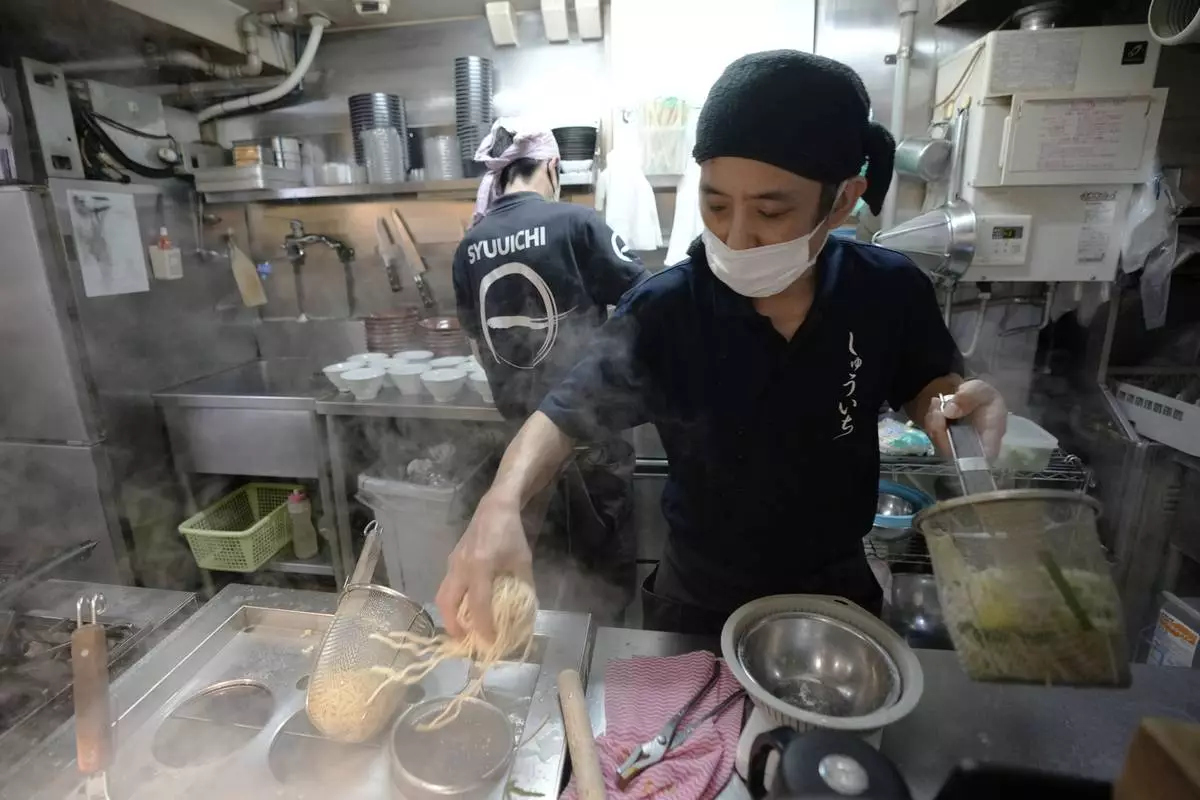
Chefs prepare noodles for participants of Tokyo Ramen Tours at Syuuichi, which means "once a week," featuring curry-flavored ramen, at Shibuya district on April 2, 2024, in Tokyo. (AP Photo/Eugene Hoshiko)
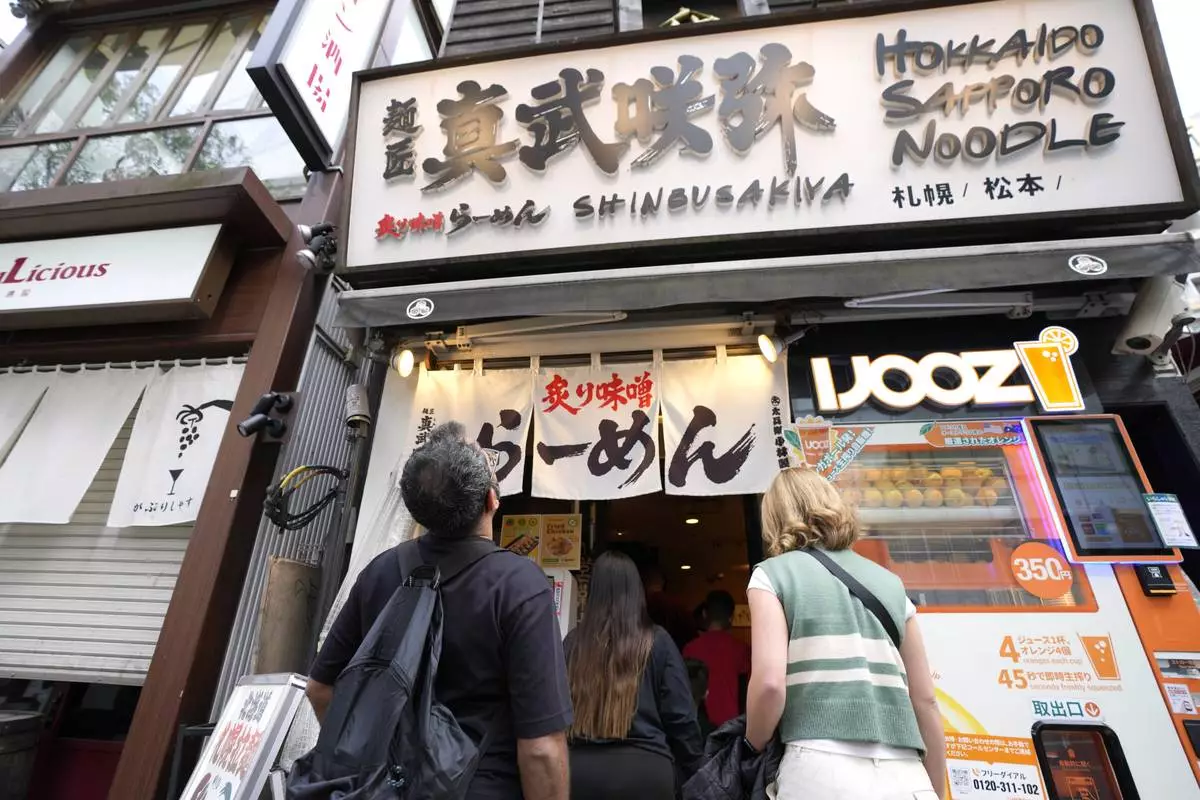
Participants of Tokyo Ramen Tours enter Shinbusakiya, a ramen shop which offers "Hokkaido classics," at Shibuya district on April 2, 2024, in Tokyo. (AP Photo/Eugene Hoshiko)
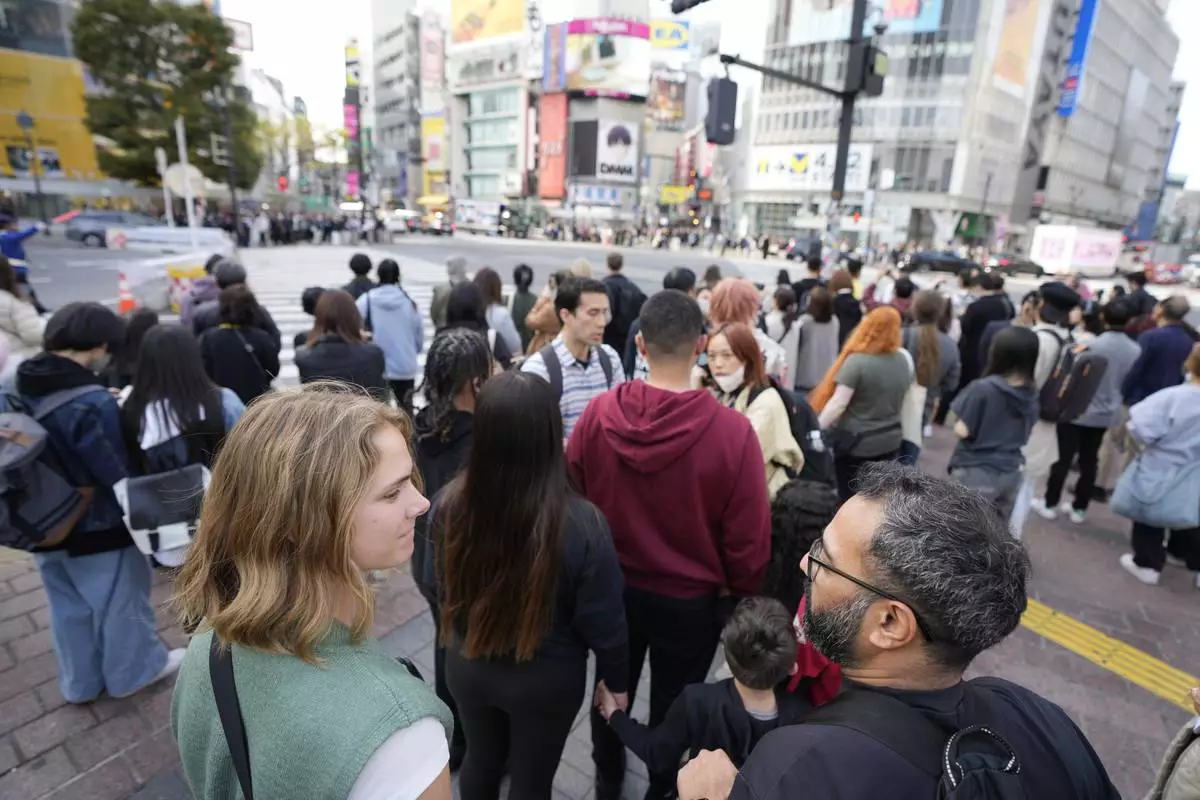
Frank Striegl, center, a guide of Tokyo Ramen Tours, leads several participants of a ramen tasting tour near Shibuya pedestrian crossing at Shibuya district on April 2, 2024, in Tokyo. (AP Photo/Eugene Hoshiko)
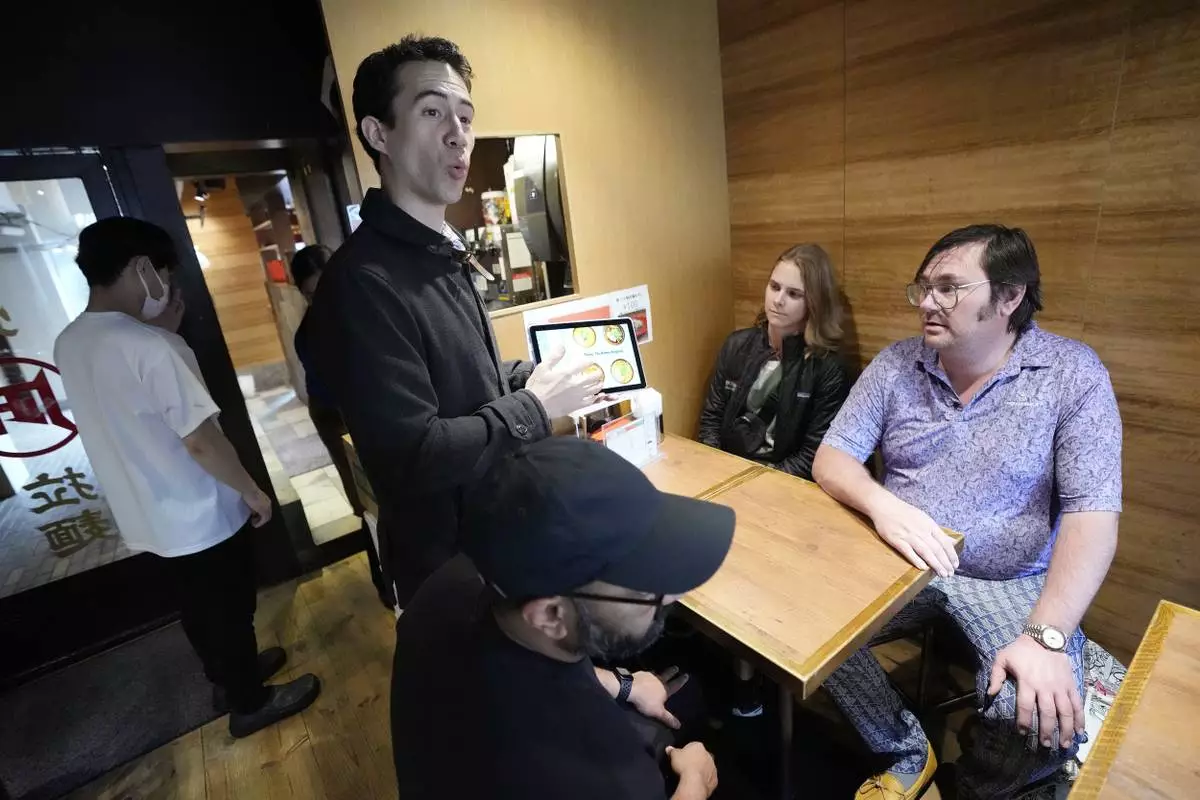
Frank Striegl, standing at center, a guide of Tokyo Ramen Tours, explains foreign participants of a ramen tasting tour at Nagi which offers "Fukuoka fusion," type ramen at Shibuya district on April 2, 2024, in Tokyo. (AP Photo/Eugene Hoshiko)
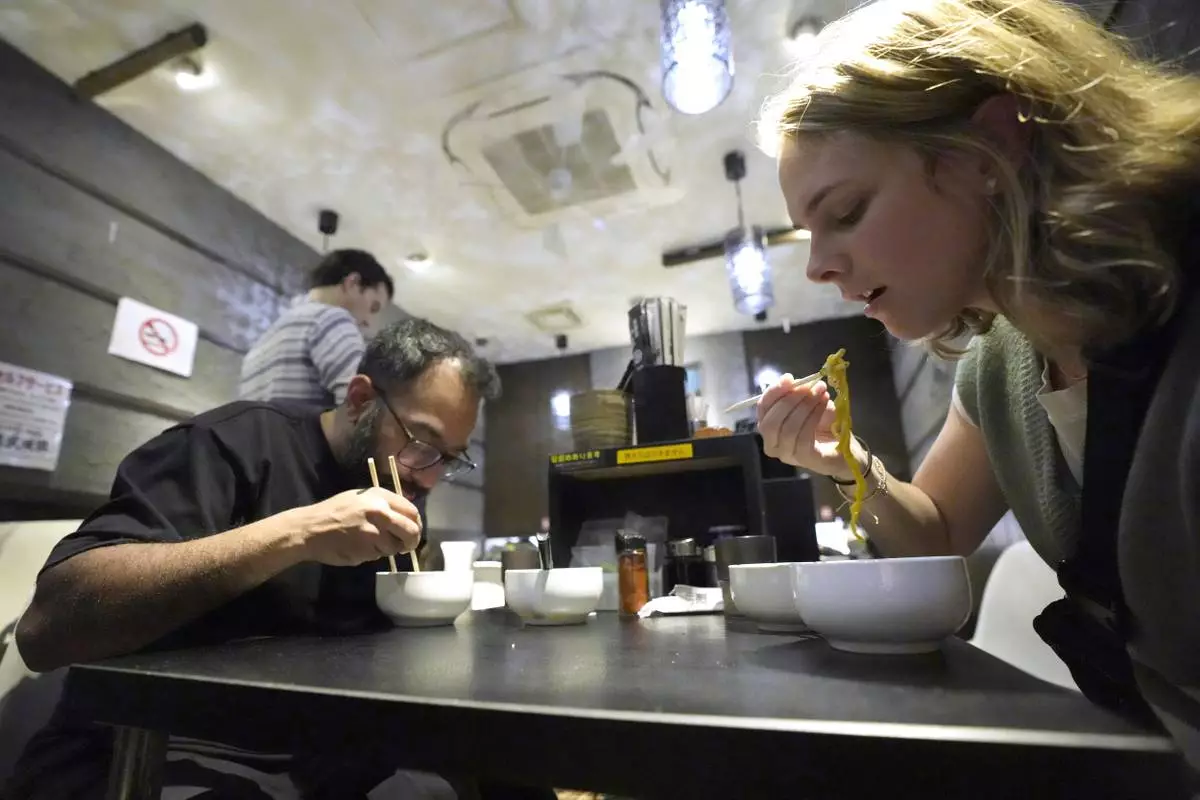
Participants eat the noodle at Shinbusakiya, a ramen shop which offers "Hokkaido classics," during Tokyo Ramen Tours at Shibuya district on April 2, 2024, in Tokyo. (AP Photo/Eugene Hoshiko)
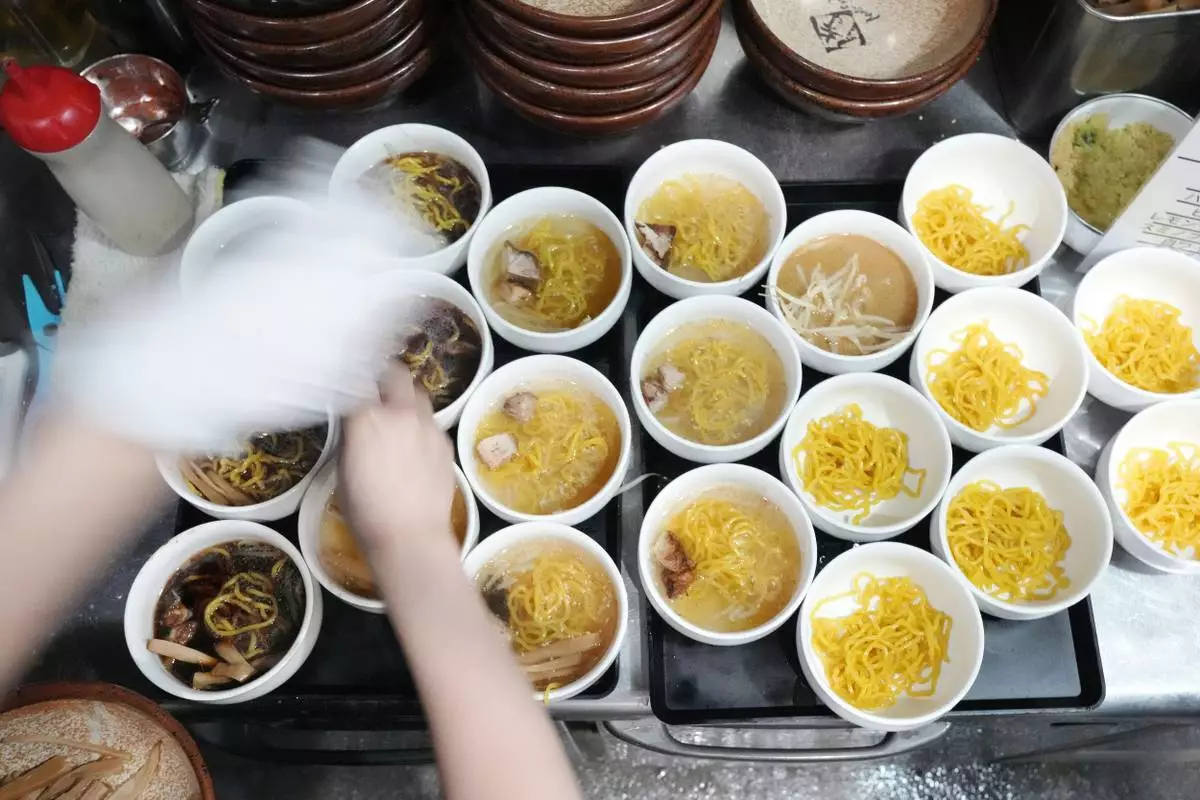
A staff member prepares small bowls of noodle for participants of Tokyo Ramen Tours at Shinbusakiya, a ramen shop which offers "Hokkaido classics," at Shibuya district on April 2, 2024, in Tokyo. (AP Photo/Eugene Hoshiko)






